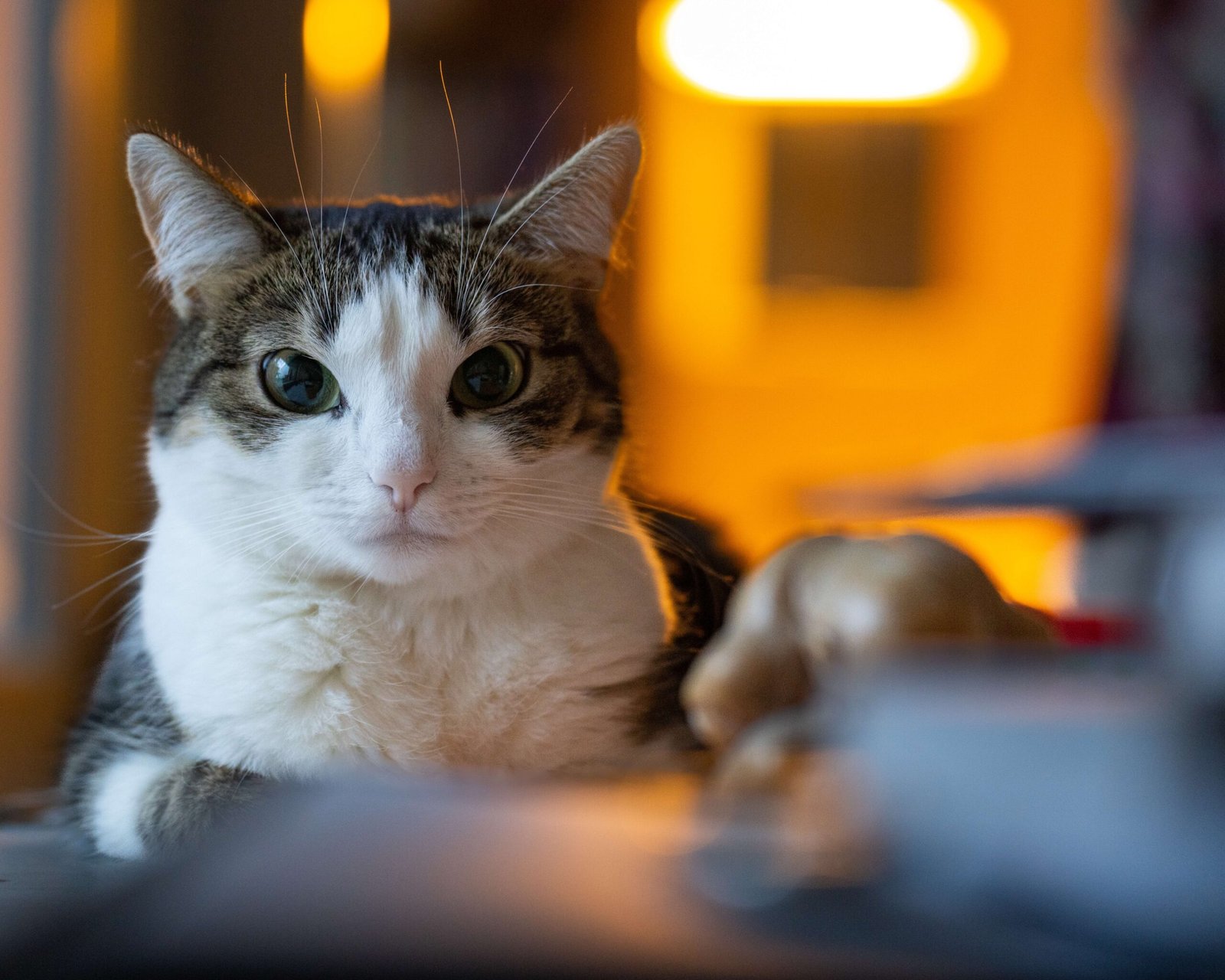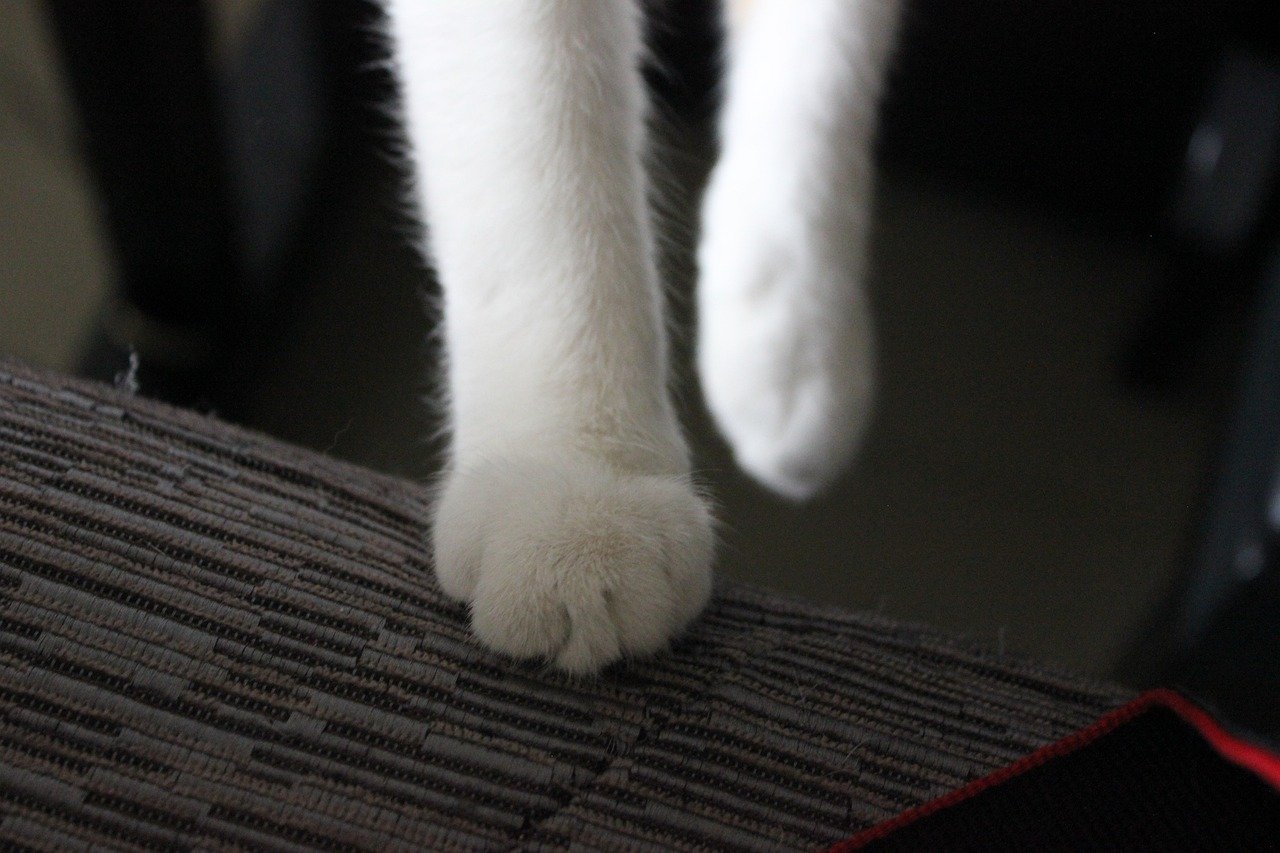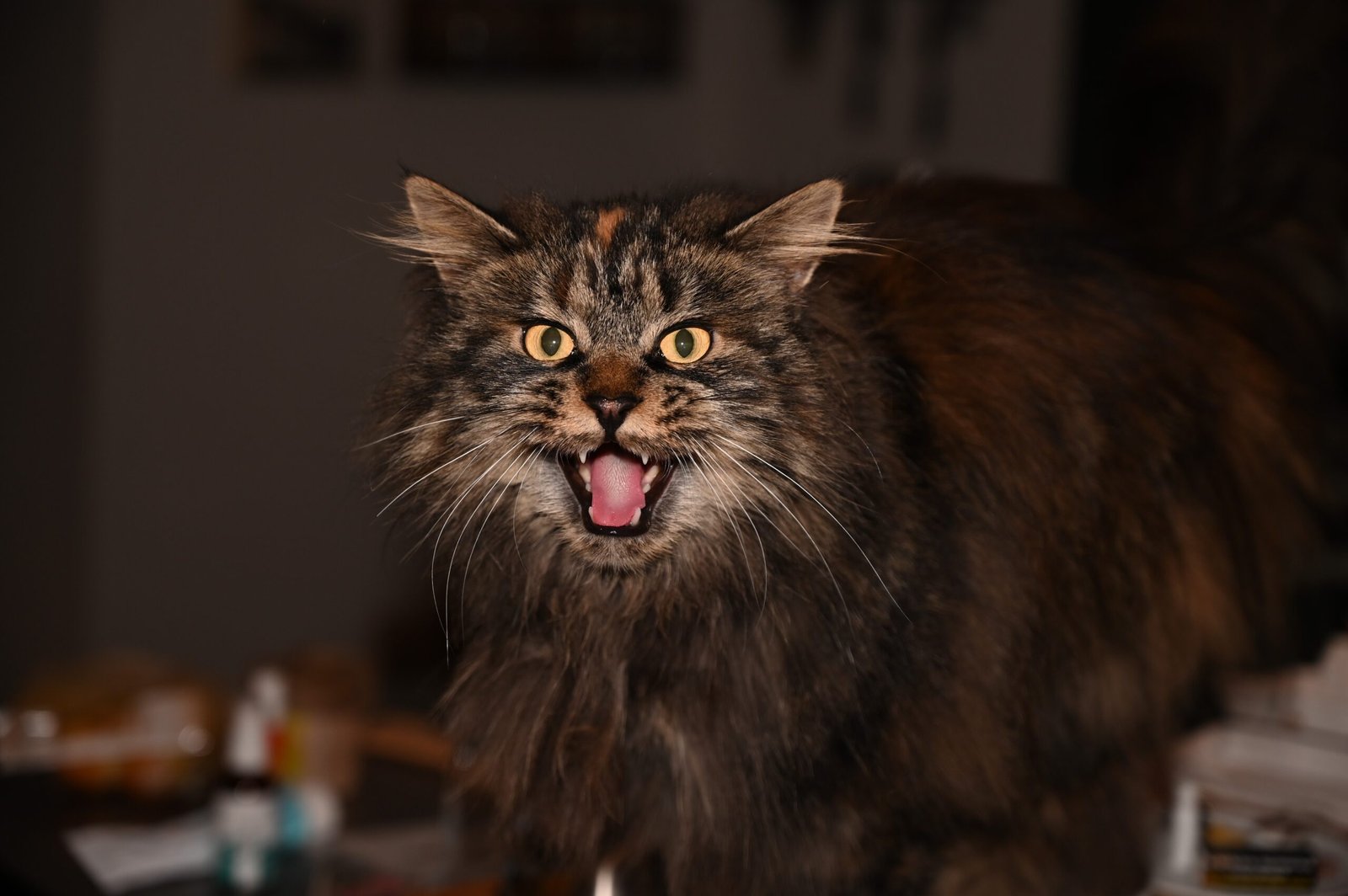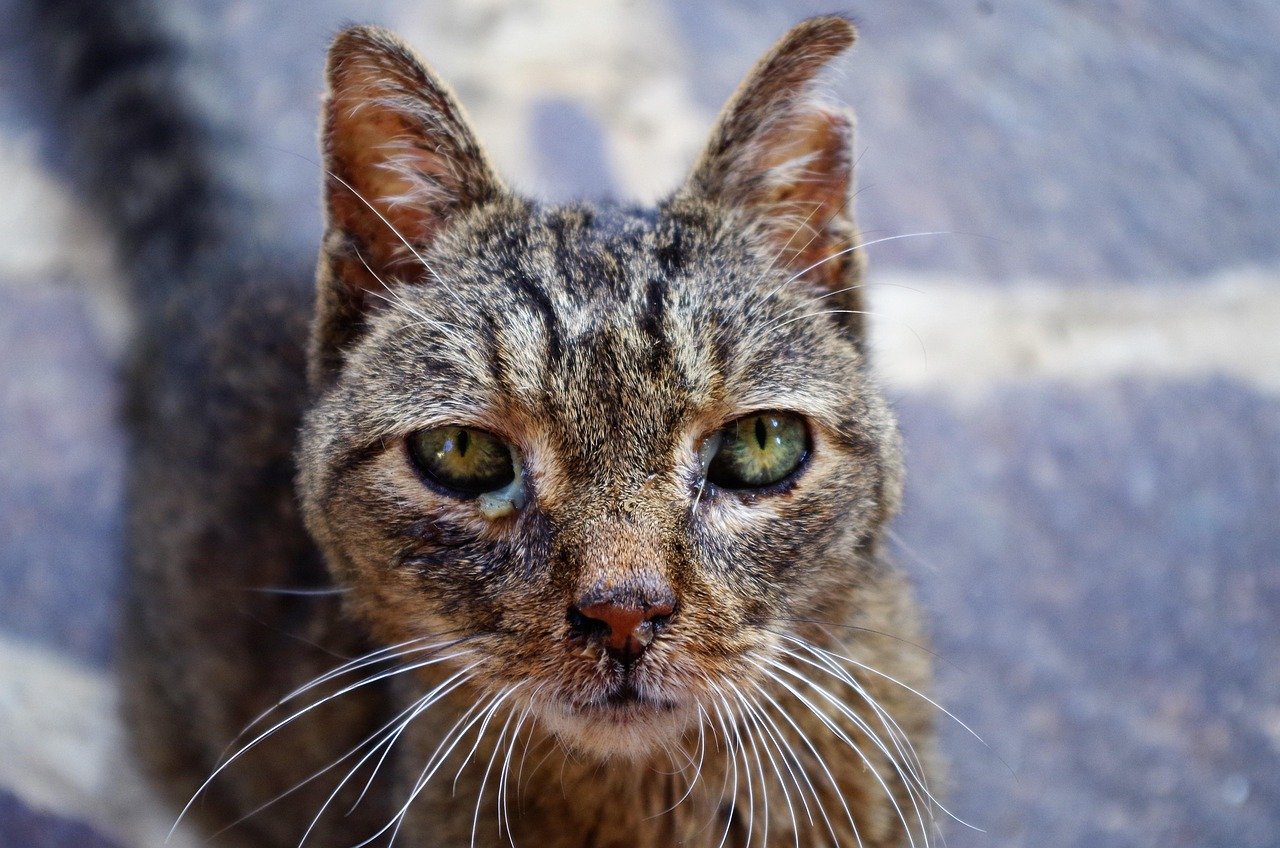Cats may be masters of subtlety, but their behavior can reveal a lot about how they’re really feeling. A slow blink, a gentle purr, or relaxed body language usually means they’re happy and content in their environment. On the flip side, hiding, over-grooming, or sudden aggression can be signs your feline friend is feeling stressed. Understanding these behaviors helps you respond to their emotional needs and create a space where they feel safe and secure. In this guide, we’ll break down six positive signs of contentment and six red flags of stress—so you can keep your cat feeling their best every day.
Purring: The Classic Contentment Signal
The soothing sound of a cat’s purr is often seen as the ultimate sign of happiness. When a cat curls up on your lap and purrs, it’s like they’re singing you a soft lullaby. Purring is most common when cats feel safe, loved, and comfortable in their environment. It can happen during petting, after a meal, or when they’re relaxing in a sunbeam. However, it’s important to know that sometimes cats purr when they’re in pain, so context matters. Most of the time, though, a steady, relaxed purr means your feline is truly content. Think of it like a cat’s way of saying, “All is well here.”
Slow Blinking: A Silent “I Love You”

If you catch your cat giving you a slow blink, consider it a compliment. This gentle closing and opening of their eyes is like a secret handshake between you and your cat. It’s a sign they trust you and feel utterly at ease in your presence. Many feline experts call this the “cat kiss.” If you return the slow blink, you’re strengthening your bond and reassuring your cat that you’re a safe companion. This behavior is usually seen in calm, loving environments and is your cat’s way of showing affection without words.
Kneading: Happy Memories in Motion

You might notice your cat rhythmically pressing their paws into your lap, a blanket, or even your stomach. This adorable action, called kneading, is a leftover behavior from kittenhood when they would knead their mother to stimulate milk flow. When adult cats knead, it’s a sign they associate you or their environment with safety and warmth. It’s almost as if they’re reliving those comforting moments from their early days. Kneading is pure, unfiltered contentment, and it often comes with a side of blissful purring.
Relaxed Body Posture: The Art of Being at Peace
A cat that sprawls out on their back, stretches their legs, or lounges with their belly exposed is showing ultimate trust. This relaxed posture means they don’t feel threatened and are enjoying their surroundings. Cats are naturally cautious, so when they let their guard down, it’s a big deal. You might see your cat stretch out on the sofa, basking in a patch of sunlight, or even flopping down beside you. When a cat is this at ease, it’s a sure sign they’re happy and feel completely secure.
Playful Energy: A Joyful Spirit Unleashed
Content cats love to play, whether it’s chasing a feather toy, pouncing on shadows, or engaging in a spirited game of hide-and-seek. Playtime isn’t just about fun—it’s also a way for cats to express their well-being and confidence. If your cat initiates play with you or their toys, it’s a positive sign they’re feeling great. Their movements are usually light, bouncy, and energetic, showing off their playful spirit. The more your cat plays, the happier they’re likely to be.
Gentle Head-Butting: Marking You as Family
Head-butting, also known as bunting, is a heartwarming gesture where your cat gently bumps their head against you. This behavior is packed with meaning. Cats have scent glands on their heads, and when they head-butt you, they’re marking you with their scent—essentially claiming you as part of their family. It’s their unique way of saying, “You belong with me.” If your cat regularly head-butts or rubs their face on you, consider it a sign of deep affection and happiness.
Hiding: A Subtle Cry for Help
When a normally outgoing cat suddenly starts hiding under the bed or in a closet, it’s time to pay attention. Hiding can be a clear signal your cat is feeling stressed, anxious, or unwell. Cats are instinctively wired to seek shelter when they’re scared or uncomfortable. Changes in the household, loud noises, or new pets can trigger this behavior. If hiding becomes frequent or prolonged, it’s crucial to identify and address the source of their distress.
Excessive Grooming or Poor Grooming: The Stress Paradox
Cats are famous for their cleanliness, but when grooming habits change dramatically, something’s off. Excessive grooming, where a cat licks themselves raw or bald, often points to anxiety or stress. On the flip side, a stressed cat might stop grooming altogether, leading to an unkempt appearance. Both extremes are red flags that your cat is struggling emotionally. This behavior can be compared to how some people bite their nails or neglect self-care during tough times.
Tail Flicking or Lashing: The Silent Warning
A cat’s tail is like a mood barometer. When your feline’s tail is twitching, flicking, or lashing back and forth rapidly, it usually means they’re annoyed, agitated, or stressed. This is their way of signaling, “Back off!” Unlike the soft, slow tail movements of a relaxed cat, sharp tail flicks are a clear warning sign. If you notice this behavior, it’s best to give your cat some space and try to identify what’s bothering them.
Vocalizing More Than Usual: The Stressful Chatter

While some cats are naturally chatty, a sudden increase in vocalizations—yowling, meowing, or crying—can indicate stress. Your cat might be trying to tell you something’s wrong, whether it’s a change in their routine, discomfort, or an unmet need. Listen to the tone and frequency of their meows. If your quiet cat becomes unusually loud, it’s time to investigate. Imagine if you suddenly started shouting for attention; your cat’s doing the same in their own language.
Loss of Appetite: When Food Isn’t Comforting

A content cat usually enjoys their meals and may even remind you when it’s feeding time. However, if your cat suddenly loses interest in food or stops eating altogether, it’s a concerning sign. Stress, anxiety, or illness can all suppress a cat’s appetite. This behavior is never normal and should always be taken seriously. Cats are creatures of habit, so skipping meals is a major red flag that something’s wrong in their world.
Inappropriate Elimination: A Distressed Cry for Attention
When a cat starts urinating or defecating outside the litter box, it’s often a desperate signal of stress or unhappiness. This behavior can stem from changes in their environment, conflicts with other pets, or medical issues. It’s not just a mess—it’s your cat’s way of saying, “I need help!” Addressing the root cause, whether it’s emotional or physical, is crucial. Think of it as your cat sending you an urgent message in the only way they know how.
Knowing the difference between a happy cat and a stressed one can make all the difference in your pet’s quality of life. When you recognize their subtle signals—whether it’s a soft purr or sudden hiding—you can respond with the care they need. Creating a calm, engaging environment helps your cat feel safe, loved, and totally at ease. And let’s be honest, a content kitty makes for a much more peaceful home for everyone involved!
Jen is a passionate nature lover and ocean conservationist. She has dedicated her life to protecting the environment and preserving the beauty of the natural world. Growing up in a small coastal town, Jen sincerely appreciated the ocean and its inhabitants. She has spent countless hours exploring the shoreline, learning about the creatures that inhabit the waters, and advocating for their protection. Jen is an active member of ocean conservation organizations, and she is committed to educating the public about the importance of conserving wildlife and the natural environment.





